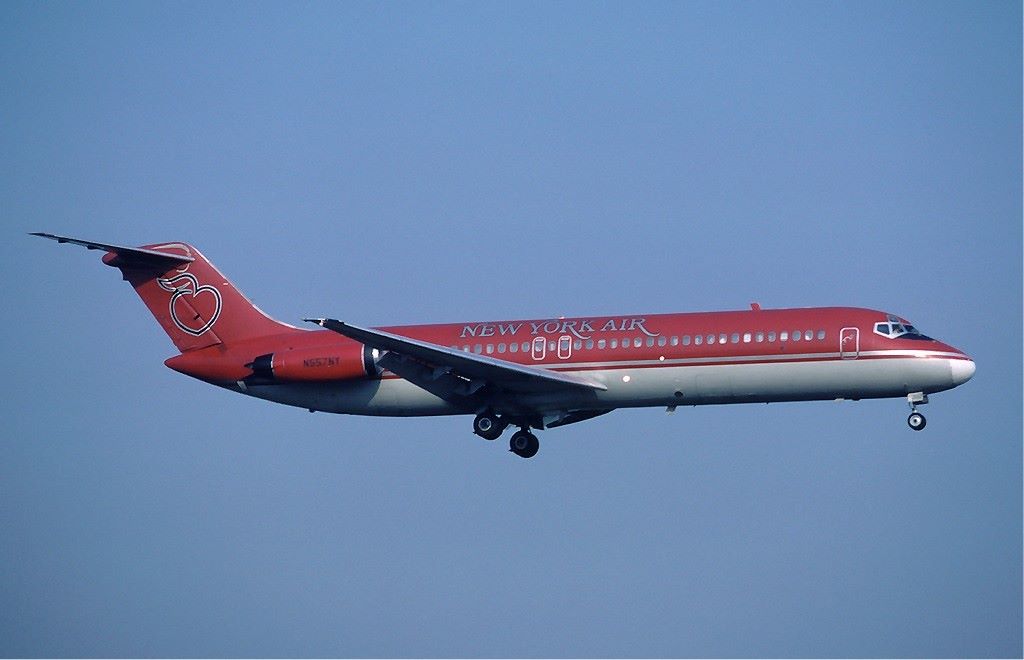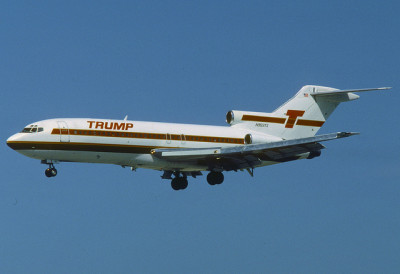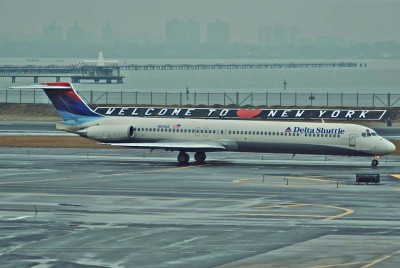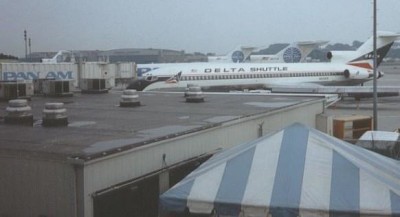
Note: This is part 2 of this history on airline shuttles. You can find part 1 here.
Deregulation – and disembowling
1978 saw the end of oversight of airlines by the C.A.B. and an influx of new carriers to the market. Texas International saw an opportunity to grow their market in the northeast USA via a subsidiary operation. In 1981, New York Air was born, offering more frills than the Eastern Air Shuttle in the same markets – but at the same fare. Operating DC-9 aircraft between LaGuardia, Washington National & Boston, such features as assigned seating, reservations & in-flight snacks and drinks were complimentary. Eastern’s most profitable domain was under attack.
Eastern’s initial response was slow – starting off with a coupon campaign where your Eastern Shuttle boarding pass could be used for $5.00 off your next ticket. With no cap on how many people could claim, a black market evolved where people would buy up these boarding passes for cash. 18 months later, this promotion was ended in favor of an upgraded Shuttle product – known as Eastern Shuttle Plus – which had drinks & allowed for reservations.
In 1982, an interesting sub-experiment began where Eastern flew the Airbus 300 between LaGuardia and Boston, to allow for more capacity in a slot-constrained period. The service lasted quite a while between the two cities, and helped to keep up availability of space as needed.
The Trump Card

Eastern’s financial woes under Deregulation took their toll on the company. First in 1986, Eastern Air Lines was sold to Texas Air – a holding company that also held Continental Air Lines and New York Air. To placate the Department of Transportation, New York Air’s shuttle assets were sold to Pan American for $166,000,000. The Pan Am Shuttle started in mid 1986, with an upgraded product in line with New York Air’s established market. To add insult to injury, Eastern was still financially strapped for cash. In 1988, Donald Trump offered to buy the Eastern Shuttle and all the planes that came with it for $385,000,000.00 – a ginormous sum of money for that era.
Trump promised it to be “The start of the world’s greatest airline empire” and promised an upgraded product for the most discerning clients. Indeed, having seen the very first Trump Shuttle 727-100, it was very much a representation of the 1980s: Gold fixtures in the lavatories, including automated faucets, leather seating with gold seat belt buckles, natural wood trim throughout and an upgraded product to match the go-go 80s. Trump entered the market in early 1989, and the race was on.
Shakedown & shakeup

The early 90s were not kind to any airline. Both Eastern Air Lines & Pan American failed within 18 months of each other; smaller carriers such as Midway Airlines & Braniff’s second incarnation also ceased operations. Record losses piled up, and a few went into Chapter 11 bankruptcy protection.
To add to this mess was the sale of both shuttles again. Pan American’s assets were sold in part to Delta Air Lines, and rebranded almost immediately to the Delta Shuttle. Meanwhile, Trump’s ace in the hole airline idea had wilted, and the banks ultimately took it over. USAir was brought in to run it, taking on the name of the USAir Shuttle. Nearly identical to each other, people in the northeast corridor were able to select from as many as 48 daily departures between the two in the key Washington, New York & Boston Markets.
By the mid 90’s, the shuttle concept was starting to grow. United, in an attempt to stop Southwest Airlines from its unabated expansion in the west started Shuttle: By United, a semi-clone of Southwest. High frequency flights on a shuttle basis, no in-flight amenities beyond drinks & easy to purchase low fares took over in their western network, expanding as far as Phoenix in the east and Seattle in the north. USAir evolved into USAirways, and an aggressive expansion of the Shuttle began with mainline aircraft dedicated to flying additional city pairs including Washington Dulles to both LaGuardia and Boston, and adding Newark to the mix.
Neither one proved successful. Shuttle By United was quietly folded back into mainline United at the end of 2000, while the additional shuttle routes at USAirways ended in 2002.
Evolution – not revolution

Following 2001, the shuttles both evolved & changed. USAirways, in an attempt to keep it viable switched to Airbus 320 equipment and added a first class cabin – a first in the market. Frequencies were carefully adjusted, and dedicated boarding lounges at their terminals allowed for more of an upscale product in a slimming market. Amtrak’s popular Metroliner service had begun to overtake some aspects of the shuttles, and adding high-speed Acela train service meant that it was taking as long to fly it as to taking the train. The evidence was clear: Change or leave.
Delta’s strategy was originally to use MD-88 aircraft on the shuttle routes. Larger in capacity to the 727s that had been retired but operating at a lower overall cost worked for a while, but this too was a bandage on a bleeding wound. Delta knew they had to alter the way the shuttle was perceived to survive.
The first real strategy was to downsize the fleet – by quite a bit. Embraer 170 regional jets became shuttle flights by the mid 90s, eliminating the MD-80s back to mainline Delta. Improving the product came next: Free beer & wine plus upgraded snacks & meals returned to the service, along with improved seating and luggage allowances. This worked very well – and the Delta Shuttle again returned to consistent profitability. As passenger counts began to rise again, a combination of 737-800 and E170 flights meant the Delta shuttle again provided the service which it had become. But their biggest leap forward was yet to come.
In 2008, Delta acquired & merged with Northwest Airlines, creating (at the time) the world’s largest airline. This massive influx of assets was deftly negotiated by both carriers, and opened up an opportunity that had long been coveted by others: The Shuttle was expanding. Delta’s move into the LaGuardia – Chicago market was not entirely unexpected. With valuable slots now open due to the restructuring of both carriers at O’Hare airport, Delta was in a position to finally start the first shuttle between the two city pairs. While other carriers such as United & American had frequent service, neither one offered the upscale (and higher-fare) shuttle product, instead relegating those key route pairs to mainline service.

And it was a success. Delta moved in and has since taken almost 40% of the ORD-LGA market, and shows signs of strong positive growth continuing. Delta then began to look beyond the east for further growth of the shuttle… and back to where it all started: Los Angeles-San Francisco.
Late in 2012, Delta announced plans to open Delta Shuttle in the west, initially (and to date) between LAX and SFO. The same upscale pricing and product apply, and thus far it has done well by most standards. Upgauging flights to the larger 717 and 737-800 are good indicators they have found a niche there as well for a product and a price people are willing to pay for.
Into the future
As US Airways becomes American Airlines today, the shuttle there is a huge question mark. With their own assets now at disposal, and a premium product on the transcon markets, it is time for them to reconsider how they are doing key city shuttle markets. It can be expected that they too will start a competitive product shuttle product between LGA and ORD, and possibly extending it to other markets as demand warrants.
And then there is the longest shuttle market in the world: New York to London. As this goes to press, in summer of 2016, American and British Airways will offer a record 12 daily round trips between London/Heathrow & New York/Kennedy as part of their expanding global service. From 5PM to 12AM, flights will leave on a joint schedule between the two cities every 40 minutes, in addition to the two morning departures and the London City Express service. Not to be left out, Delta, via their ownership stake in Virgin Atlantic, is also planning on ramping up their JFK-LHR service in a similar manner. While we here in the USA have grown around shuttle flying, the Atlantic is now starting to see their own growth – and on a much longer scale.



Great write-up. Thanks for the memories! I can still remember boarding NY Air as a kid and grabbing a red lunch bag with a bagel and an apple. The bagels were actually quite good.
As a regular shuttle flyer, I think you are wrong about the date Delta started using E170s in lieu of MD-88s. I think it was the 2007-2008 timeframe. I really like those planes compared to other regional jets.
There was a period during the transition when the shuttles were still open seating, but they were two cabin MD-88s. If you were near the front for boarding, you could snag an F seat. I remember sitting in F on some of those flights and seeing recognizable billionaire finance people head to the back of the plane.
If you fly on the early morning LGA-DCA Delta shuttle in first class, there is a pretty good chance you’ll be sitting with Chuck Schumer.
Lately last minute shuttle prices have been through the roof. During the recession they were down to ~$400 or so. Now they are in the $700-$900 range most of the time. It is hard to justify compared to the train ($300-$500) when the shuttle saves you only an hour door to door at best and often is comparable. It works out great for revenue based mileage earning though!
You are correct: The date should read mid-00’s rather than the 90s; this is an oversight on my part and a rather embarrassing error!
Back in that decade, I lived & commuted using the various shuttles to the northeast from DC. I recall in 2004 Delta was looking at the E-Jets for the shuttle, but did not introduce them fully until a few years later. There as a TON of union consternation over this planned swap.
You point out a fascinating fact about the open-seating MD88s on the shuttle during transition. I had a similar experience on Southwest back in the late 80s with them – and a 737 that had hastily been put into service from another carrier with a first class compartment. As I was among the first to board, I asked the F/A if those were reserved – to which her DRIPPING Texas accent said “Only for those who don’t want to sit in the back of the bus!” It was a very comfortable ride to say the least!
As for fare increases, that was inevitable – though to what point. Both Delta and American no longer operate ‘pride’ routes at a loss, such is modern commercial flying. But 700-900 is extreme, even by modern standards. But as you pointed out: GREAT for RQMs!!!
Thanks for pointing out something I should have caught in my first draft – hopefully the time machine won’t send E-Jets back to the 90s again 🙂
R.D.